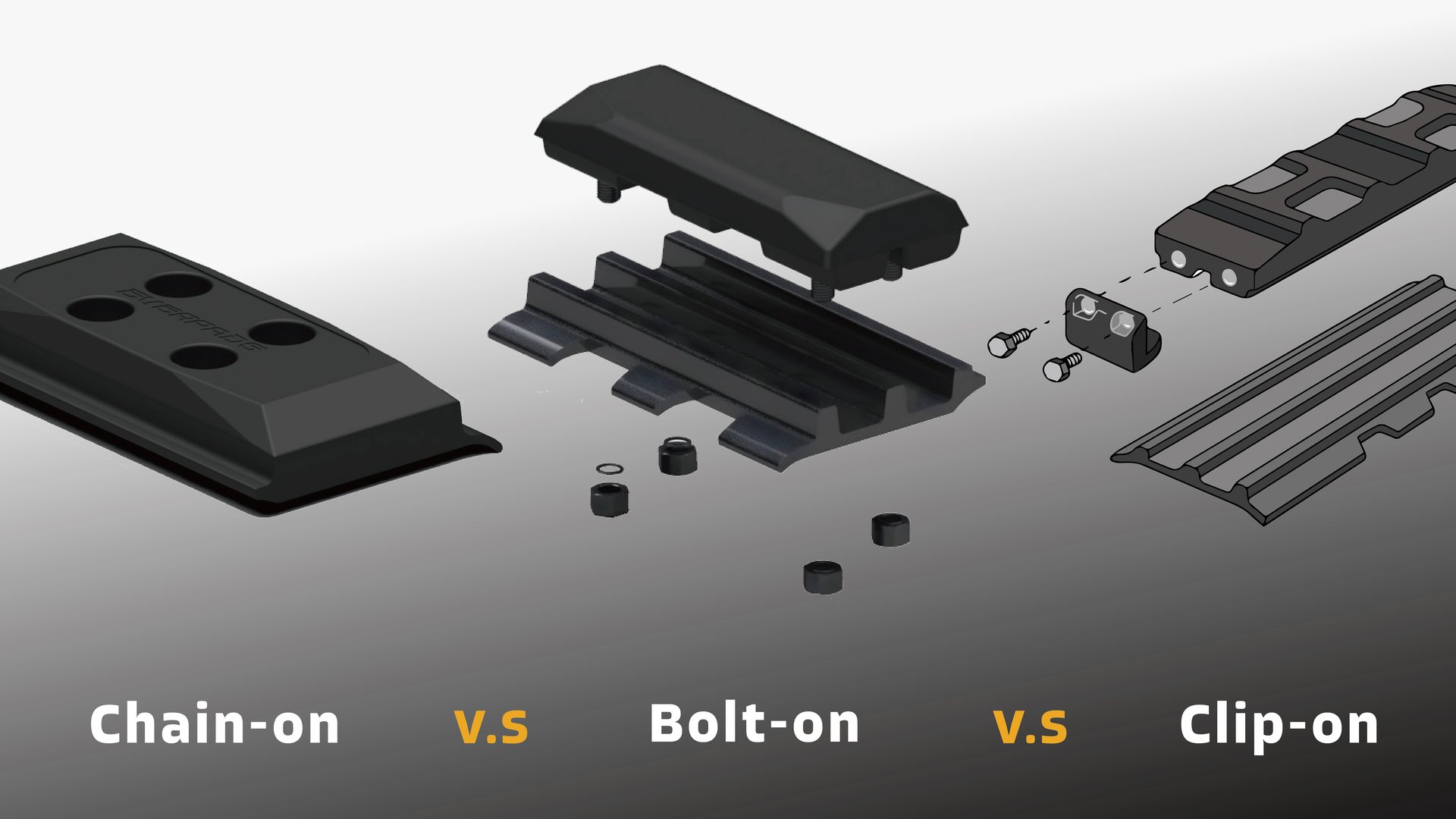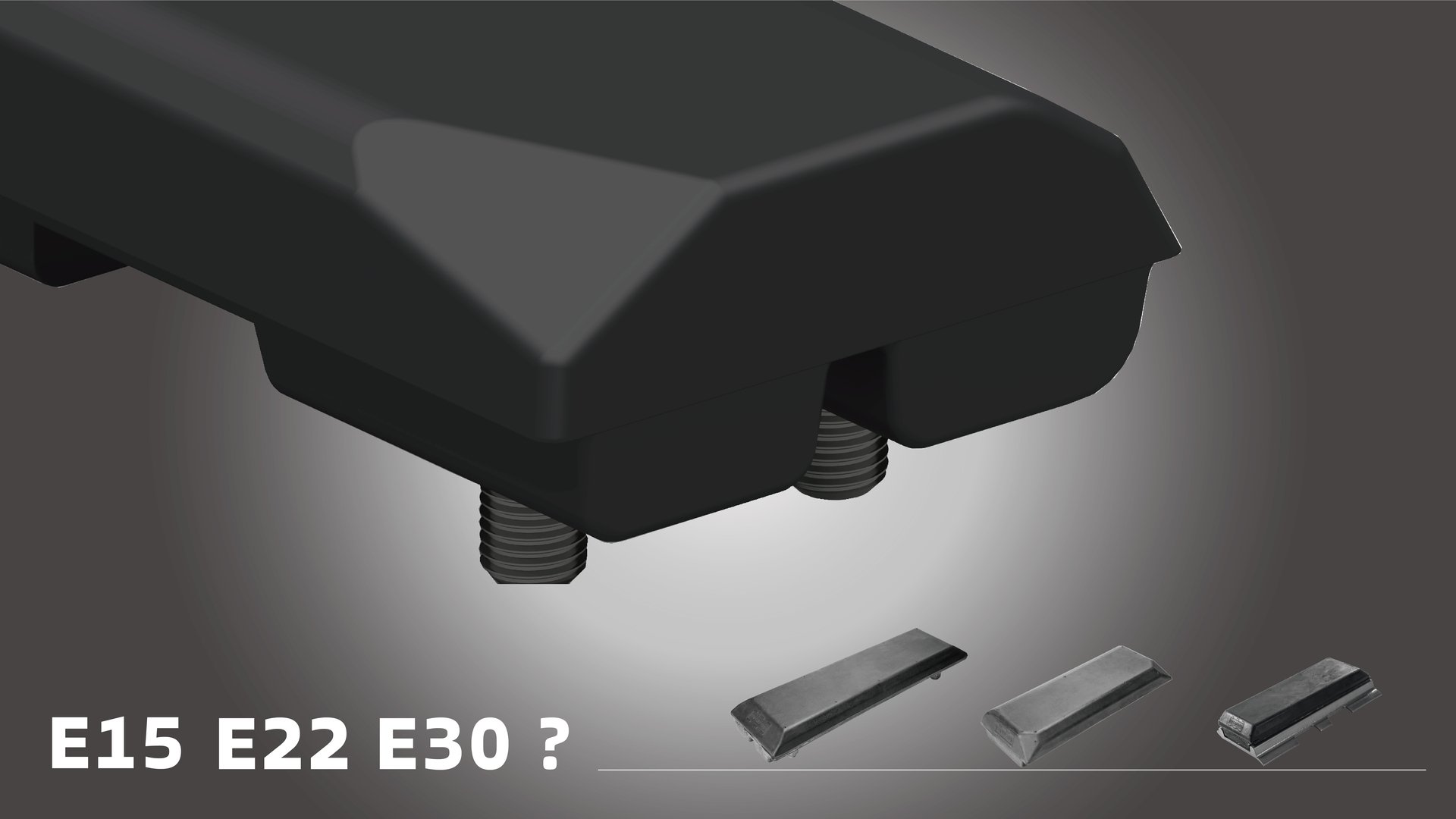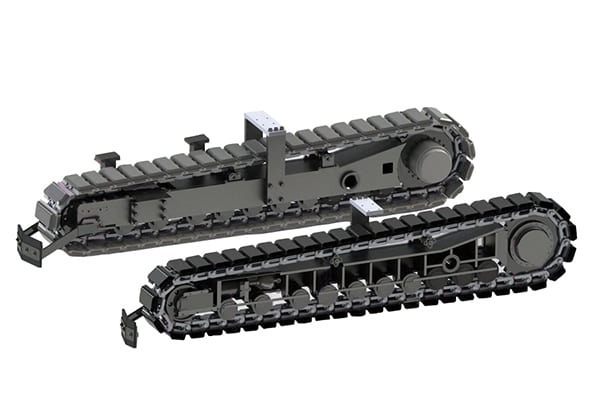Track Pad: The Ultimate Guide for Heavy Construction Equipment in 2024
18. Aug. 2023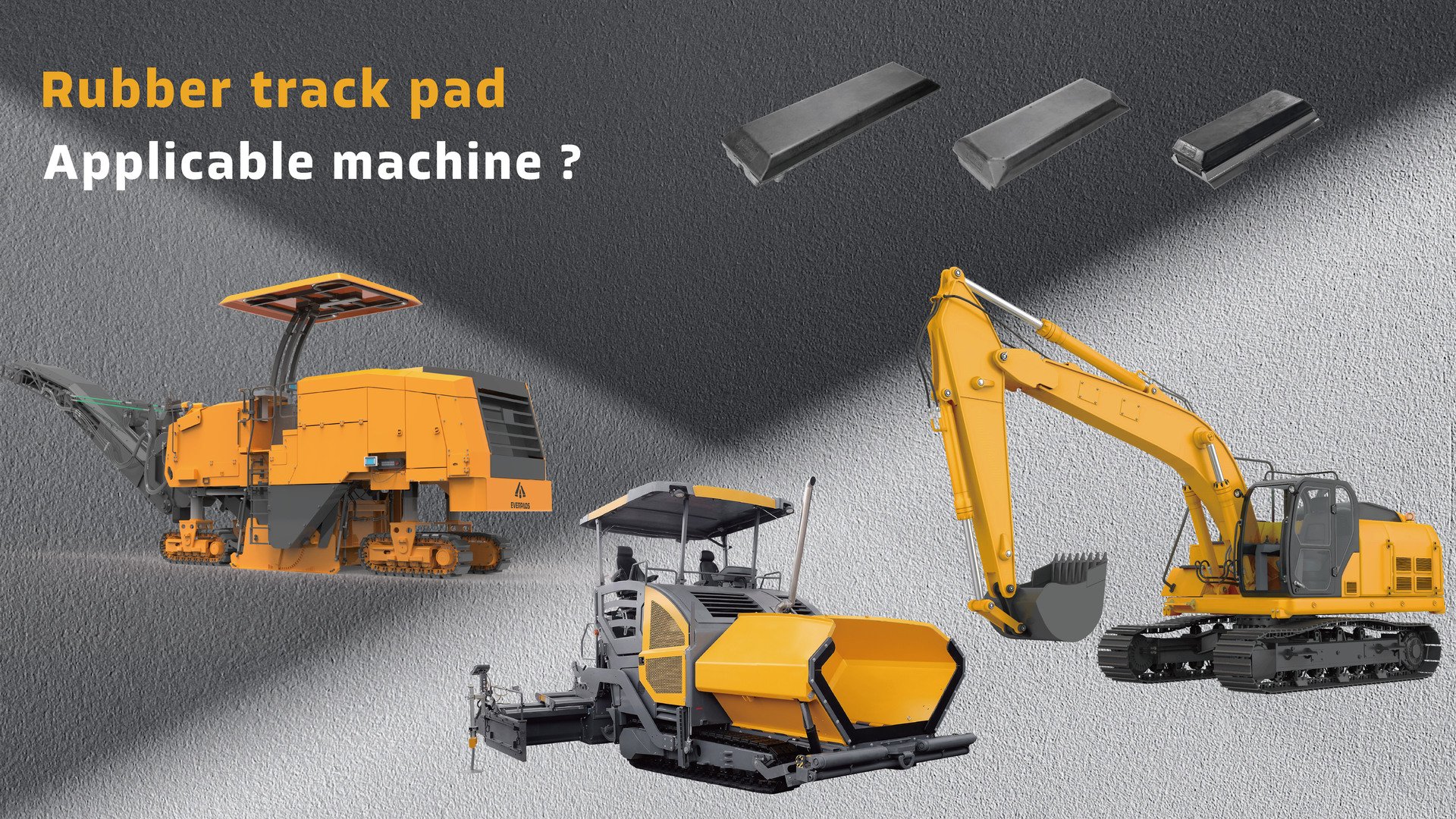
Track pads are essential for crawler types of heavy construction machines. Track pads serve as the interface between the machine's raw power and the ground it traverses. Providing more than just traction, these pads ensure the protection of surfaces, reduce wear and tear on machines, provide greater machine flexibility, and enhance overall operational efficiency. The landscape of track pad technology has seen remarkable advancements, with materials and designs being optimized for diverse terrains and challenging conditions. This guide aims to shed light on the intricacies of track pads, their evolution, and the pivotal role they play in today's construction industry. Dive in to discover the latest trends, innovations, and best practices that every industry professional and enthusiast should be aware of.
Table of Contents:
1. What are Rubber Track Pads?
2. What are polyurethane track pads
3. Identifying Rubber Pad Wear Patterns
4. Key Benefits of Rubber Track Pads
5. Machines that Require Track Pads and Why it's Important
6. EVERPADS Industry-Leading Rubber Track Pads
What are Rubber Track Pads?
Rubber track pads are crafted from either natural or synthetic rubber. Rubber tracks are known for their noise reduction, vibration control, and increased traction on various surfaces, making them a preferred choice for many construction applications. This rubber pad material provides superior traction, ensuring stable and slip-resistant movement across diverse surfaces. Their intrinsic flexibility and shock-absorbing qualities lead to smoother operations, diminished vibrations, increased durability, and less wear on the machinery. Suitable for excavators, pavers, asphalt milling machines, and bulldozers, rubber track pads are chosen based on the specific requirements of the construction task and the machine itself.
The effectiveness of rubber pads can vary depending on the type of equipment, the nature of the work environment, and the quality of the pads. Often, operators prefer them when a job demands increased stability and a better driving experience.
%20(2).jpg)
What are polyurethane track pads
Polyurethane track pads are engineered components made from the polymer material known as polyurethane. Polyurethane track pads bring a balance of hardness and flexibility, making these track pads durable and adaptable. They are resistant to wear, abrasion, and various environmental conditions, ensuring longevity in demanding construction environments. Additionally, their composition can be tailored to provide specific benefits, such as enhanced turning agility, depending on the needs of the application.
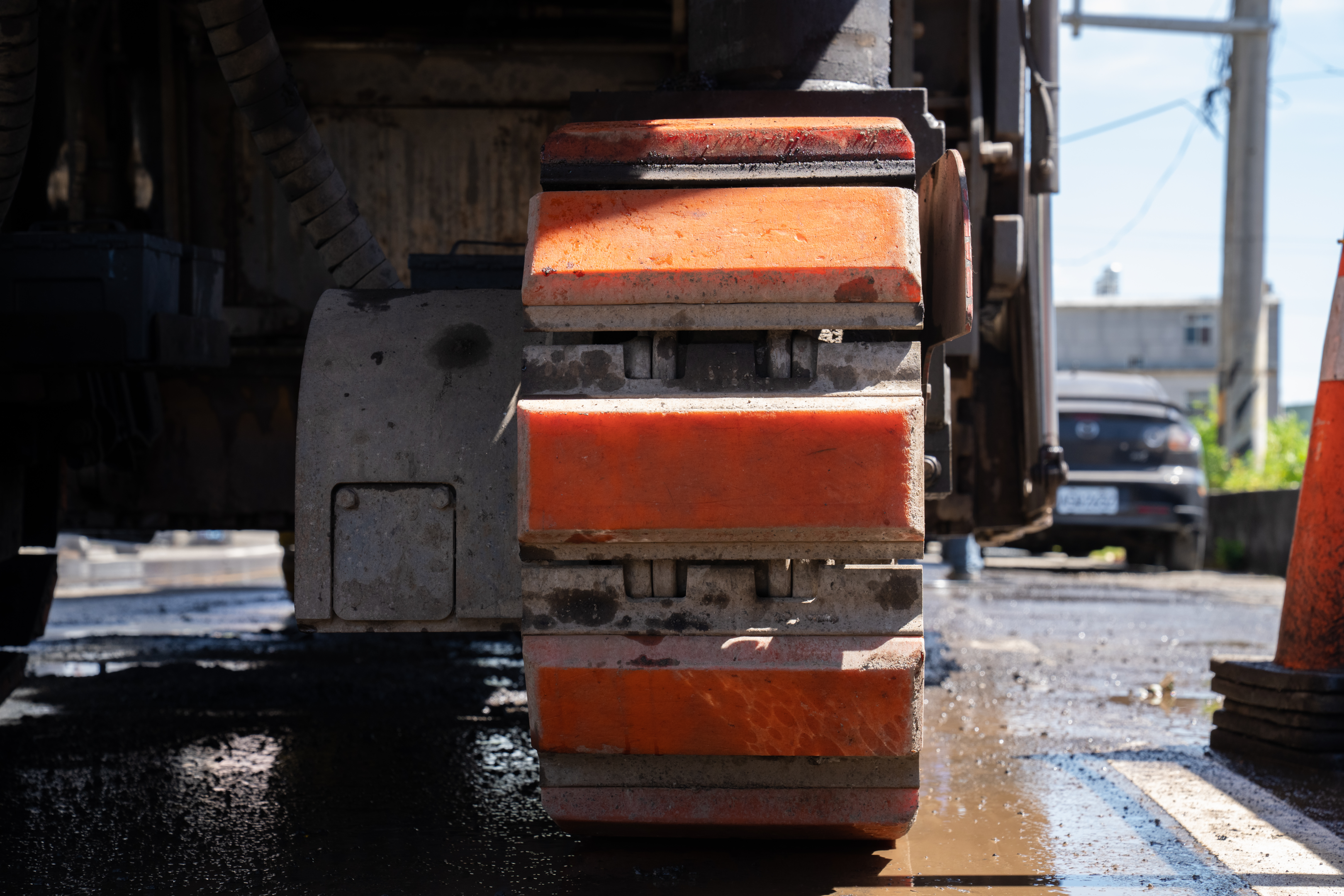
Types of Track Pads
There are several different types of rubber pads commonly used on excavators or on other large machines. Rubber pads are generally categorized based on how they are attached to the machine and the material that they are manufactured from.
Bolt-On Track Pads
A bolt-on pad is attached to the machine by screwing the pad into the steel track shoe. Bolt-on pads usually fit to pre-drilled holes of grouser to simplify on-site installation and provide a complete solution.
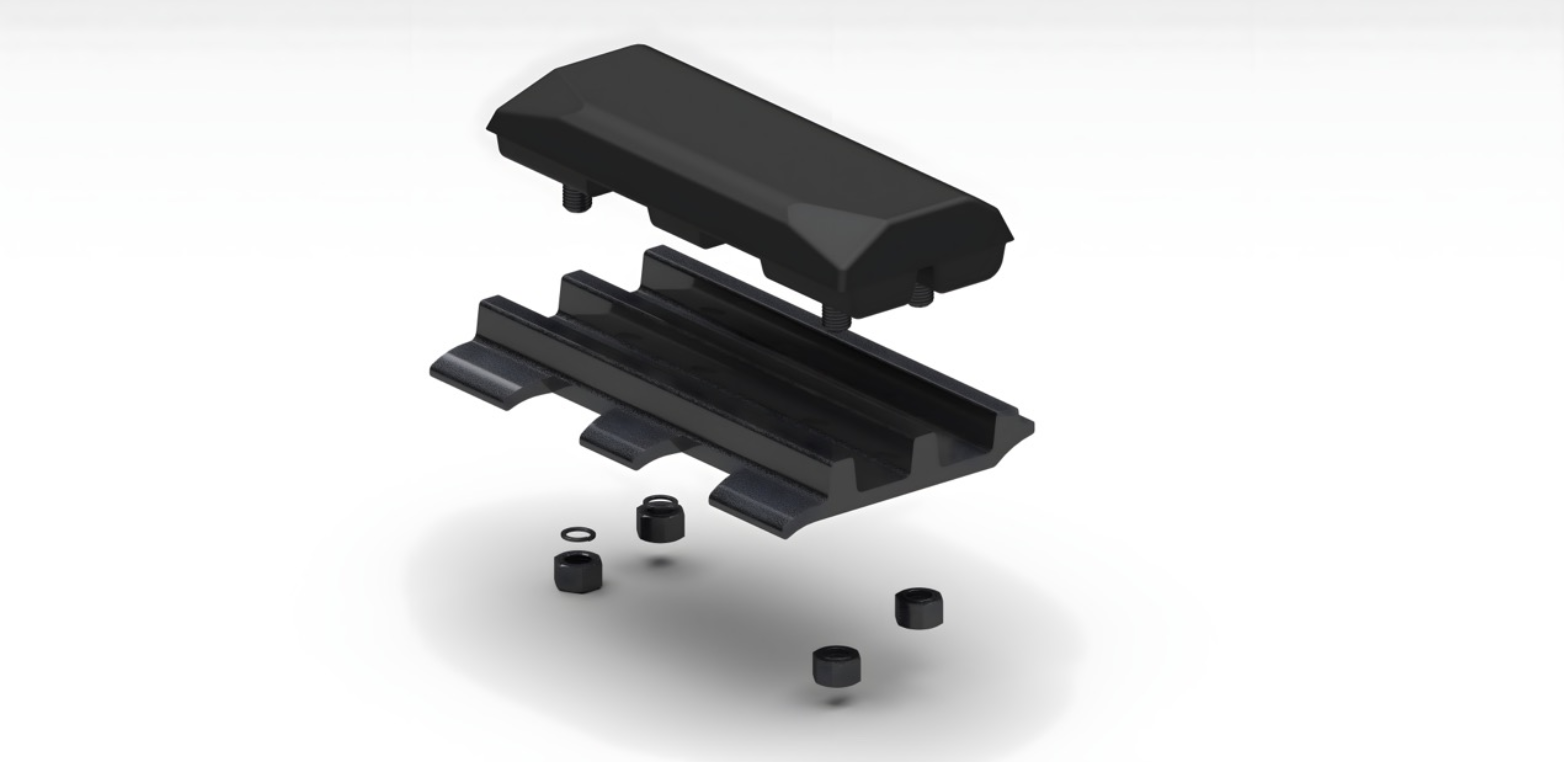
Clip On Rubber Pads
Clip-on pads are clamped around the steel track shoes. Whereas a bolt-on pad may require time-consuming drilling or change to install if the grouser is not predrilled, a clip-on pad can be installed easily while on site. But it should be aware of the instability which pads would often fall off during the construction.

Chain On Pads
Chain-on pads mounted directly onto the steel track chain. Chain-on track pads, include the rubber part molded together with the steel plate.
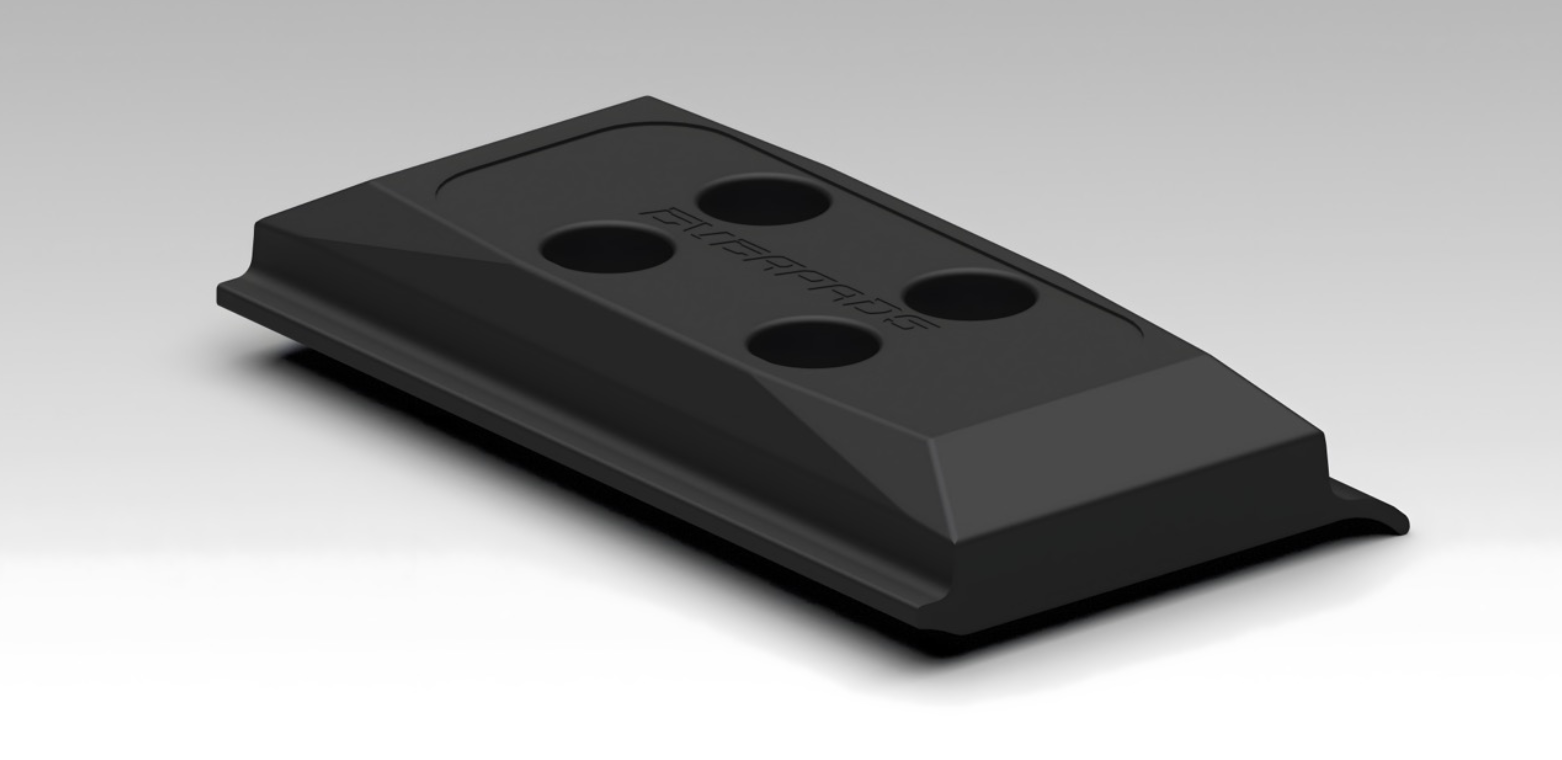
Check out our comprehensive guide to help you choose the right track pads for your application.
Identifying Rubber Pad Wear Patterns
It is crucial to regularly inspect and replace your pads to ensure the safe and efficient operation of your construction equipment. Look for signs of unnecessary wear or steel parts that may be protruding from the pads. If you notice steel protruding, replace the pads immediately to ensure that the exposed metal does not damage the substrate. Choose high-quality pads that are durable to ensure quality retention, consistent wearability, and a maximum return on your investment.
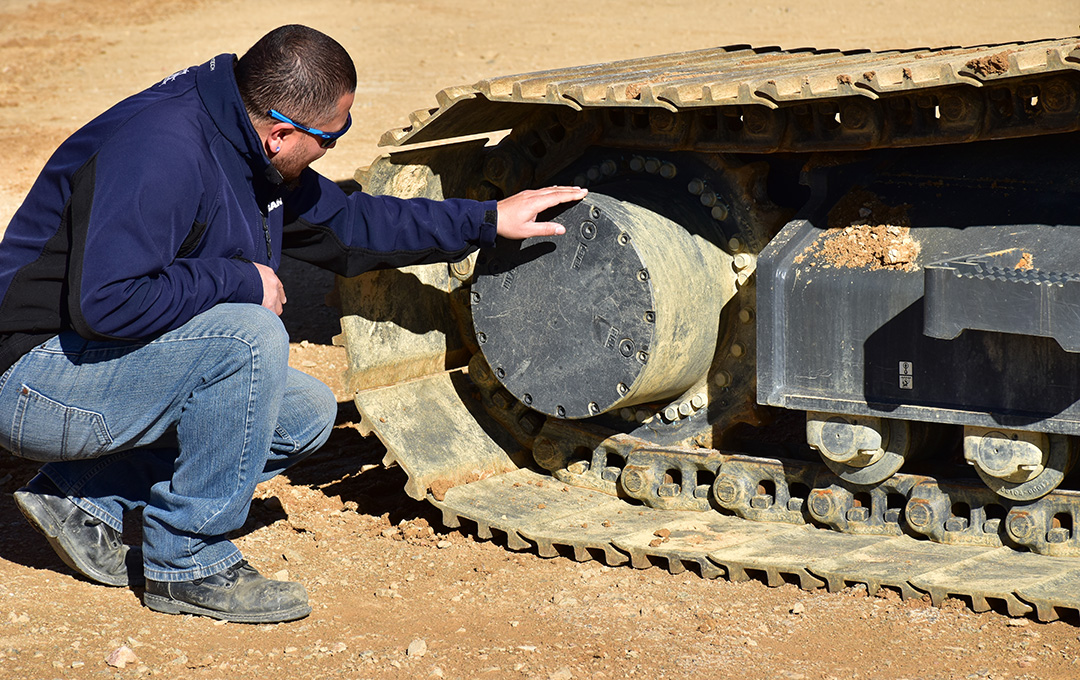
Key Benefits of Rubber Track Pads
Rubber pads and polyurethane pads provide a broad range of benefits for construction operations, including: Rubber tracks offer significant benefits such as noise reduction, vibration control, and enhanced traction on various surfaces.
Surface Protection
Rubber pads and poly pads protect delicate surfaces like asphalt. They help distribute the weight of the excavator more evenly over surfaces, reducing ground pressure.
Reduced Noise and Vibration
Rubber pads significantly reduce noise and vibration, which is particularly important in areas where noise pollution is a concern.
Greater Traction
The rubber material provides better traction, especially on slippery or uneven terrain, providing greater machine stability and safety during operation.
Improved Versatility
Rubber pads allow excavators to work on a wider range of surfaces, including areas where operations may otherwise cause damage or disruption.
Extended Track Life
By cushioning the impact and reducing wear and tear, rubber pads and poly pads can extend the lifespan of the equipment, reducing maintenance costs and offering a greater ROI.
Easier Transportation
Rubber track pads or poly pads allow machines to be more easily transported over roads without causing damage or excessive wear.
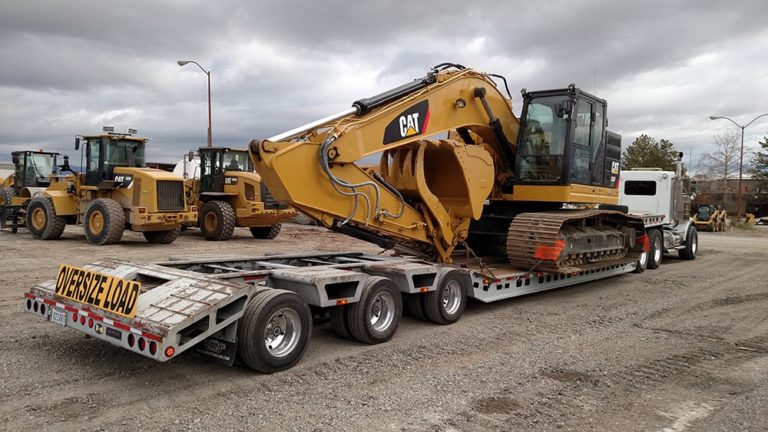
Choosing the Right Track Pads
Choosing the right track pads for your heavy construction machines is crucial to ensure optimal performance, surface protection, and machine longevity. When selecting track pads, consider the following factors:
-
Machine Type and Application: Different machines, such as excavators, asphalt milling machines, and bulldozers, require specific types of track pads. Consider the machine’s weight, speed, and operating conditions.
-
Surface Type: Delicate surfaces, such as asphalt, concrete, and grass, require track pads that provide surface protection and traction. Steel tracks can damage these surfaces, making rubber or polyurethane track pads a better option.
-
Operating Conditions: Consider the environmental conditions, such as temperature, humidity, and terrain, that the machine will operate in. Polyurethane track pads, for example, are suitable for extreme temperatures and abrasive environments.
-
Track Pad Type: Bolt-on track pads, clip-on track pads, and chain-on track pads are available. Bolt-on track pads are suitable for machines with pre-drilled holes in the steel grouser shoe, while clip-on track pads are ideal for machines without pre-drilled holes.
-
Material: Rubber track pads and polyurethane track pads are popular options. Rubber track pads provide superior traction and surface protection, while polyurethane track pads offer durability and adaptability.
By considering these factors, you can choose the right track pads for your heavy construction machines, ensuring optimal performance, surface protection, and machine longevity.
Machines that Require Track Pads and Why it's Important
Many machines utilize track pads. Some examples include excavators, multi-terrain loaders, track loaders, asphalt pavers, and asphalt milling machines. Without the rubber pads, the steel tracks can dig deep into the ground. This can create trenches that are potentially hazardous to workers, as well as destroy newly paved surfaces.
Operators of these machines face long days. Without rubber pads, the machine's steel track shoes create significant vibration. This vibration is transmitted to the operator which is not only uncomfortable but leads to fatigue and reduced productivity.
The rubber pads also improve machine maneuverability by providing more traction. This helps reduce the amount of time it takes to complete a job, increasing efficiency and reducing costs. Moreover, it prevents large equipment from getting stuck which can require a great deal of resources to recover.
Asphalt Milling Machine
Use Case: These machines are designed to remove the worn-out or damaged surface of roads in preparation for repaving.
Importance of Track Pads: The milling process involves a lot of vibration and movement. Track pads are essential to absorb these shocks, ensuring consistent milling and preventing further damage to the road surface. They also provide stability, ensuring that the milling process is even and efficient.
Recommended Track Pads: Both bolt-on and chain-on track pads are frequently used for asphalt milling machines. In recent times, polyurethane track pads have become the common choice due to their durability and adaptability. However, rubber track pads were previously favored for their superior shock absorption, especially beneficial given the intense vibrations from the milling process.
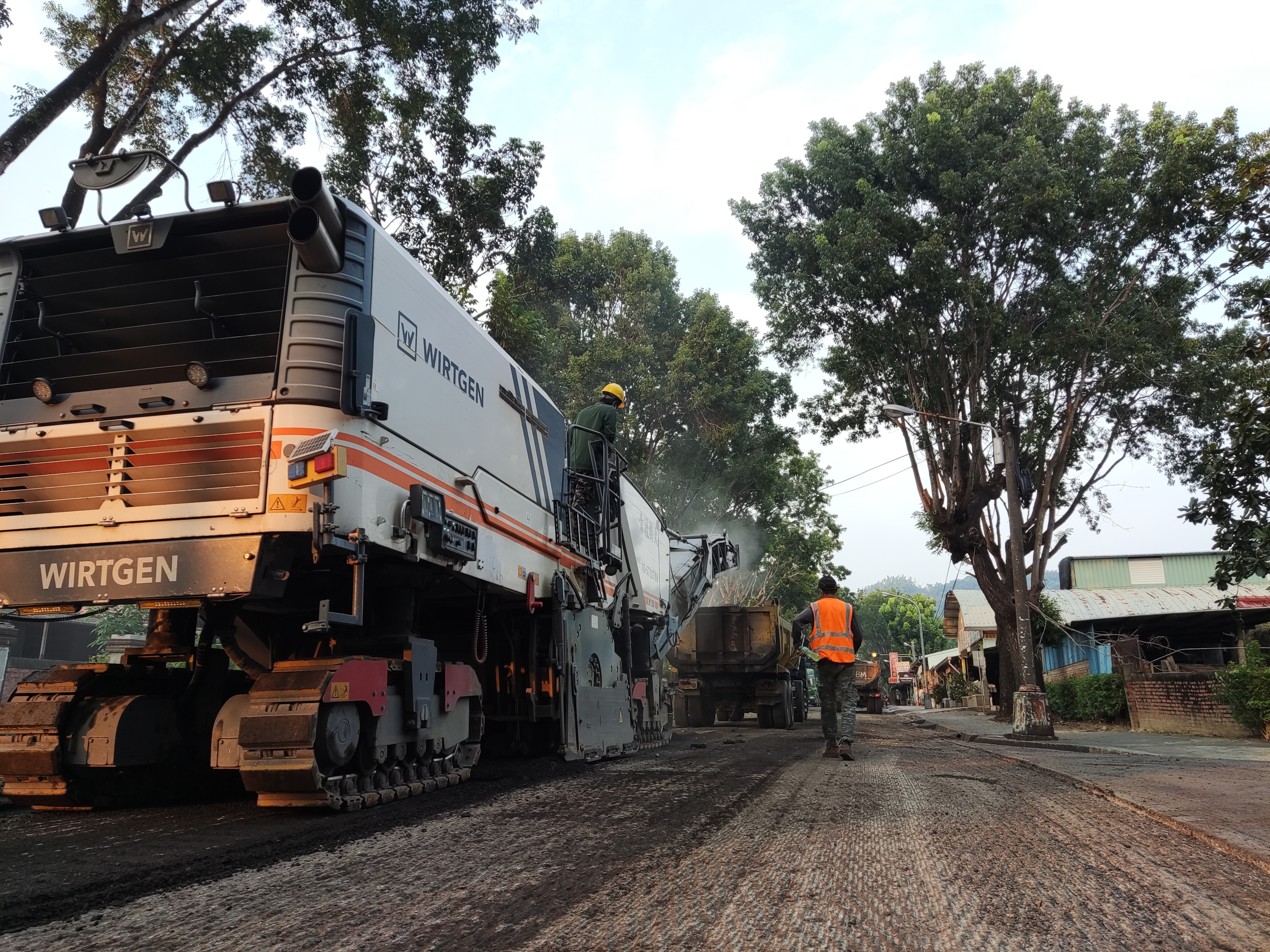
Asphalt Pavers
Use Case: Asphalt pavers are used to lay asphalt on roads, bridges, and parking lots. They need to move smoothly to ensure an even application.
Importance of Track Pads: For asphalt pavers, stability is paramount. An unstable paver can lead to an uneven asphalt surface, which can cause long-term issues for road users. Track pads provide the necessary stability, ensuring that the machine moves smoothly over the asphalt. This protects the freshly laid asphalt from potential damage by the machine's weight and ensures an even distribution of weight for a smooth finish.
Recommended Asphalt Paver Track Pads: Rubber track pads are recommended for asphalt pavers. Their superior traction and stability properties make them ideal for producing an even asphalt surface.
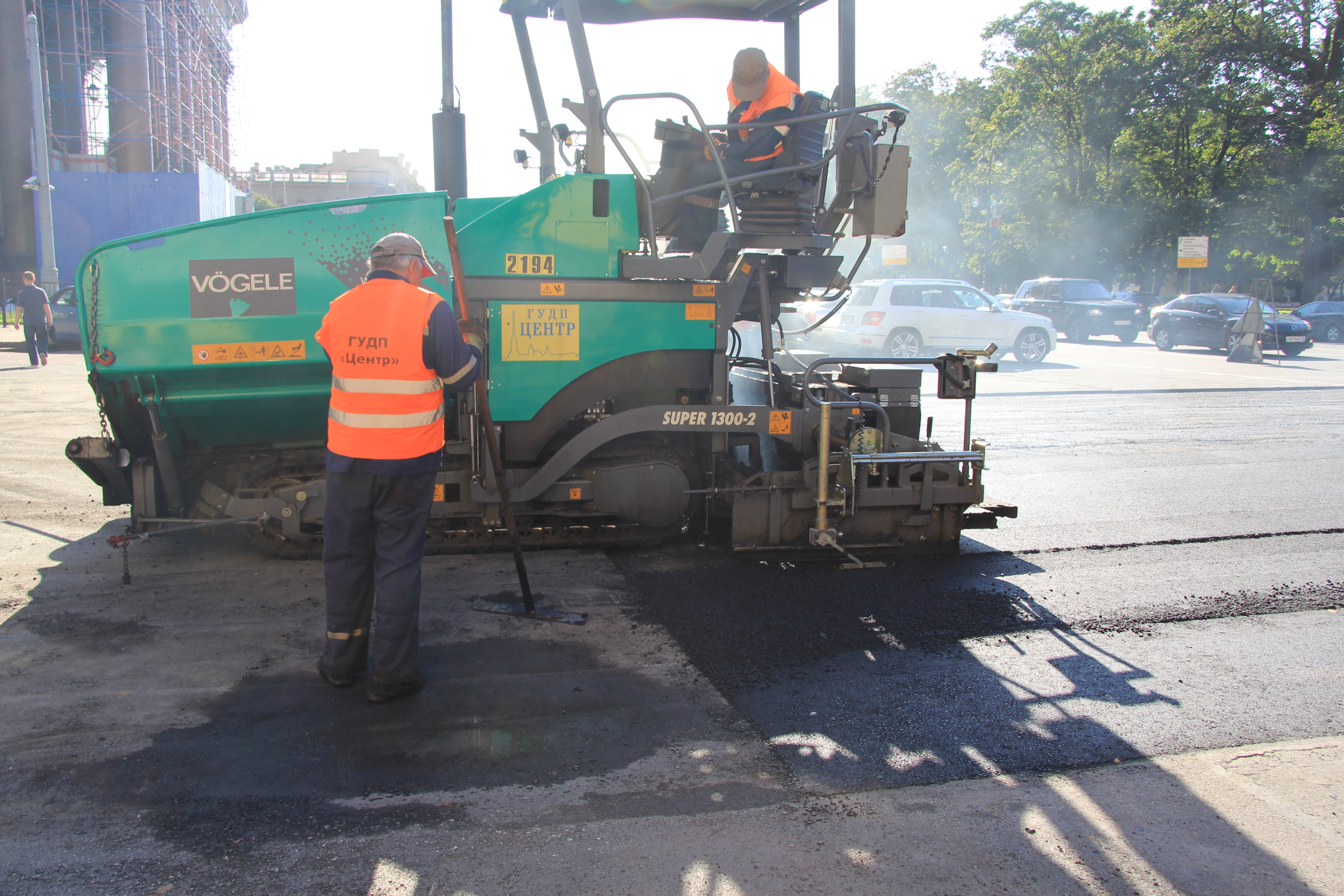
Excavators
Use Case: Excavators are primarily used for digging and are often involved in heavy-duty construction tasks. They need to move efficiently on various terrains without causing damage.
Importance of Track Pads: Track pads provide excavators with the necessary traction for stable movement, especially on slippery or uneven grounds. They also prevent the steel tracks from digging into the ground, which can create hazardous trenches.
Recommended Excavator Track Pads: Bolt-on and chain-on pads are commonly used for excavators due to their stability and ease of installation.
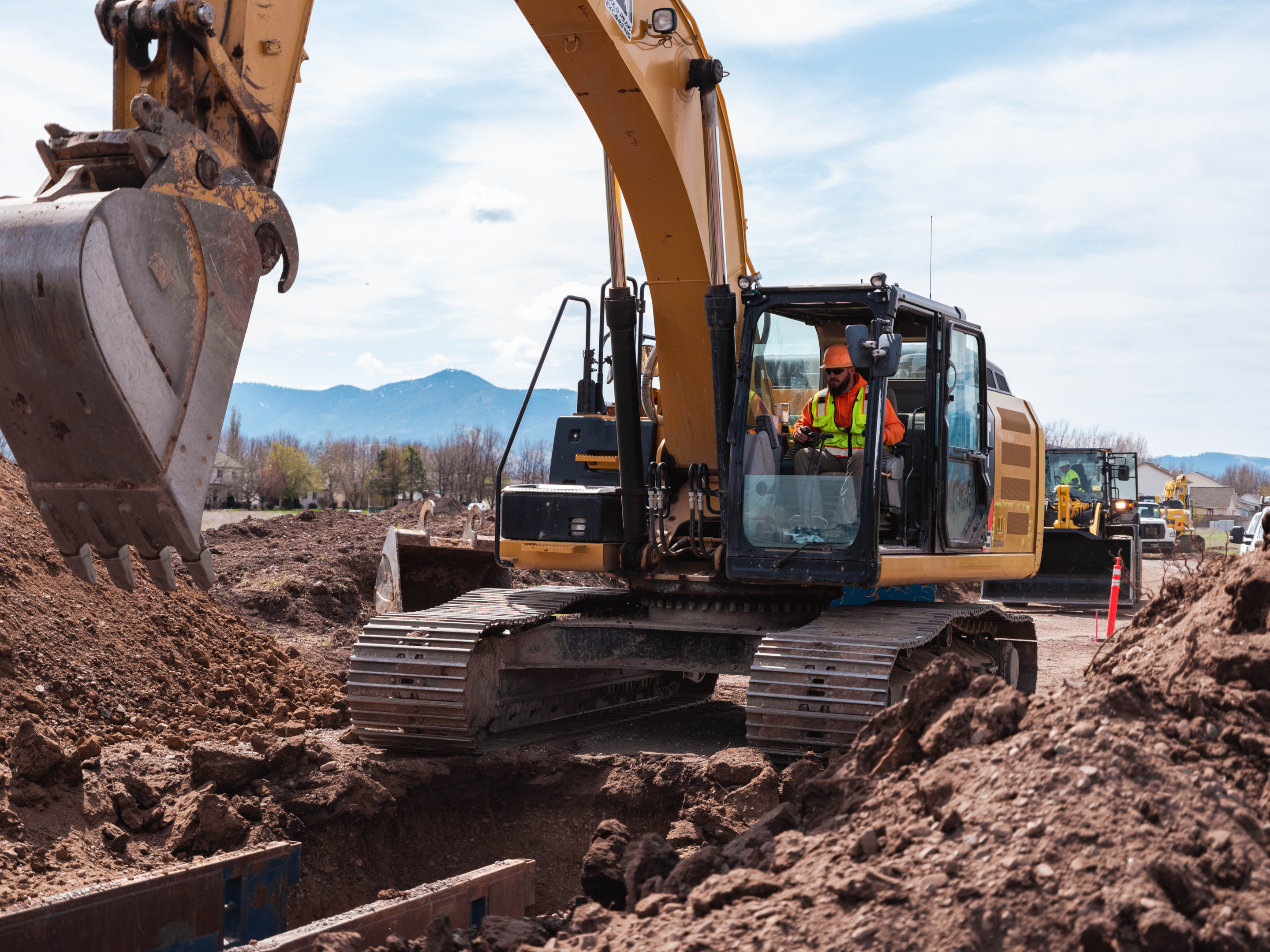
EVERPADS Industry-Leading Rubber Track Pads
EVERPADS offers bolt-on and direct-to-chain rubber pads for excavators and other equipment requiring more stability and flexibility during operations. Our pads are manufactured using an exclusive rubber formula, ensuring that they will withstand the toughest environments with maximum service life. Click here to learn more about our industry-leading rubber track pads.
.png?width=698&height=417&name=%E5%AE%98%E7%B6%B2logo%20(1).png)
